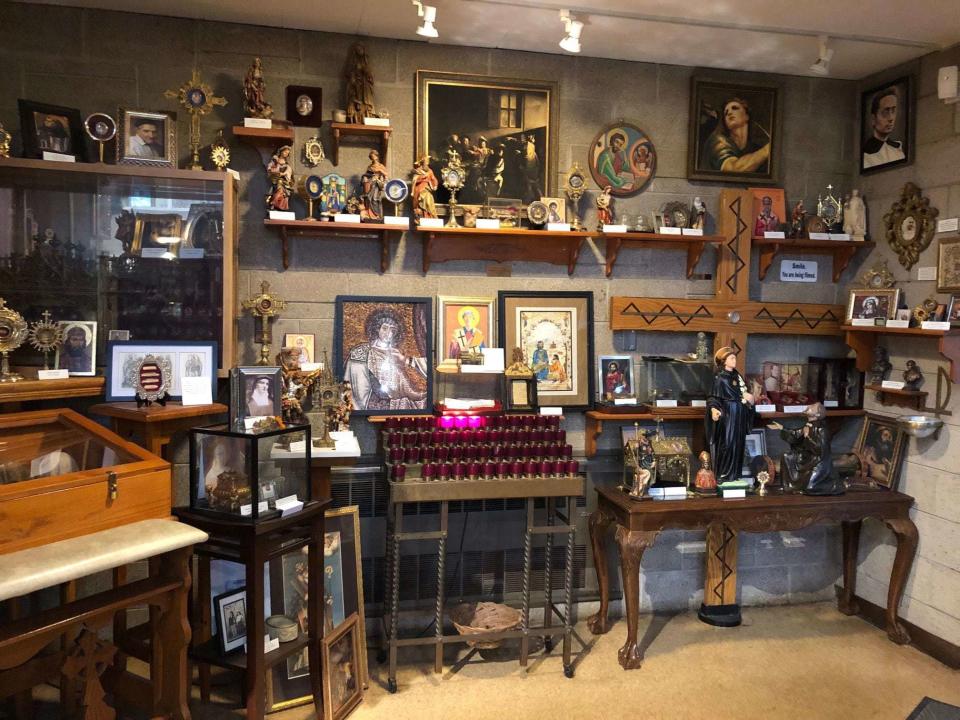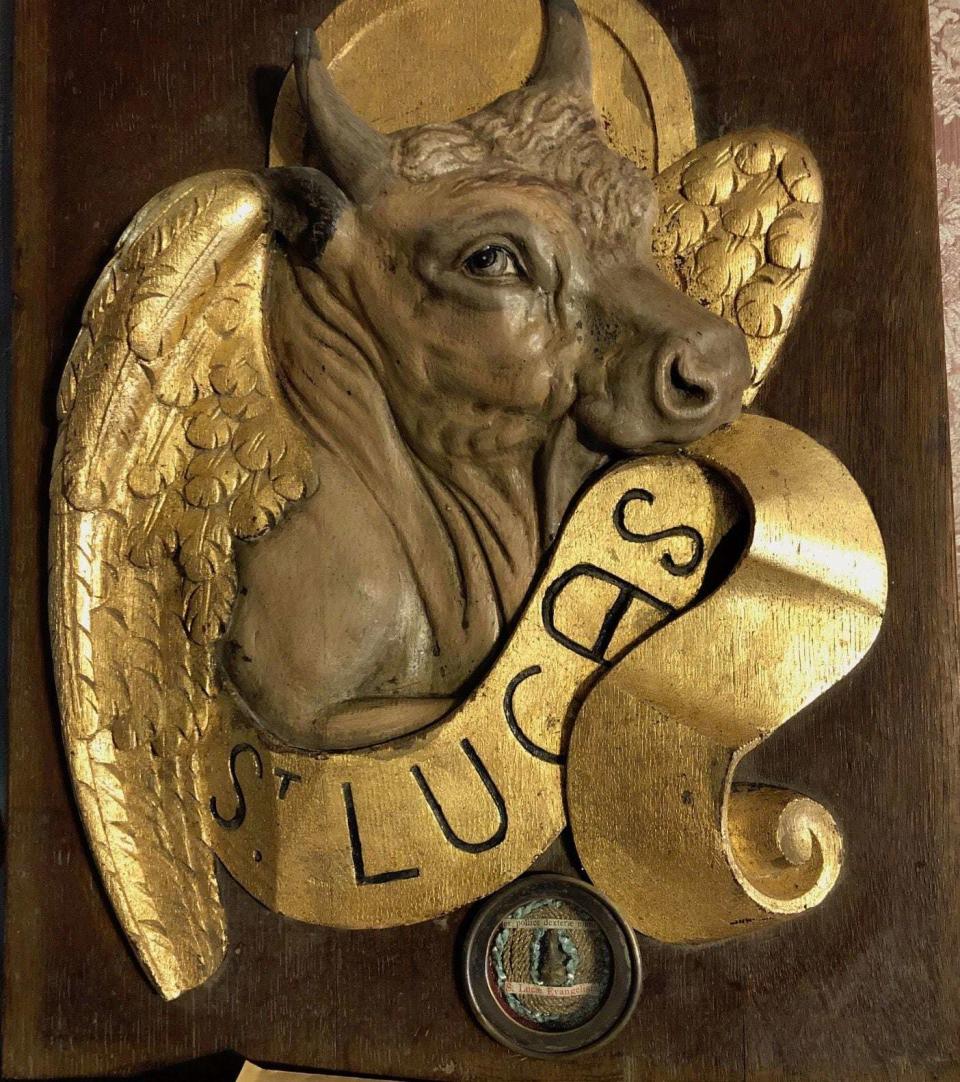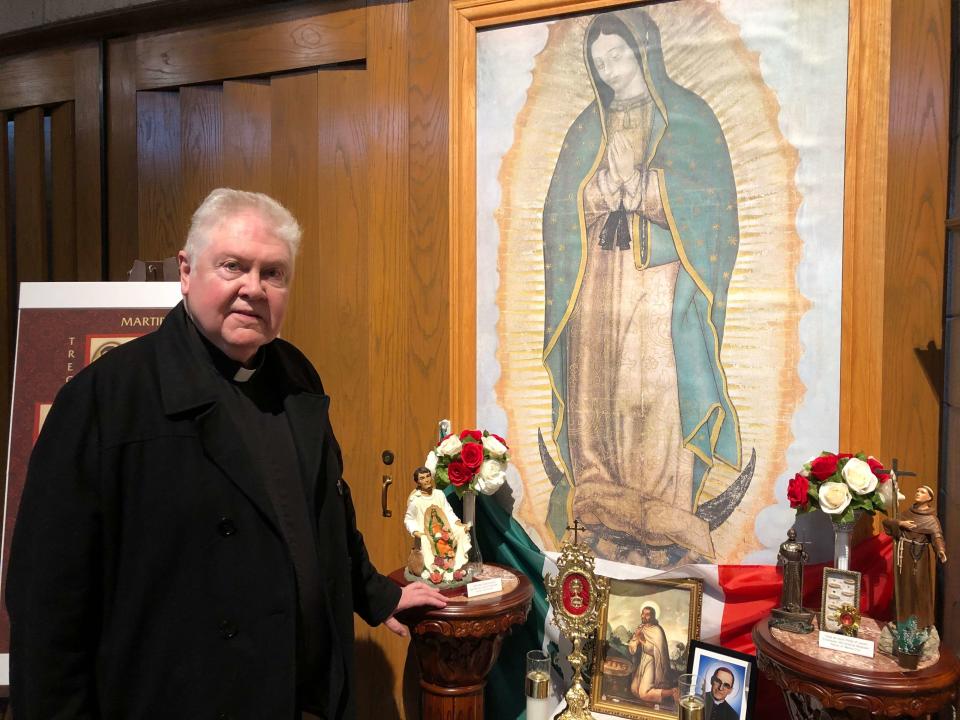Catholic shrine in Morton Grove gains holy relics of Saints Luke and Juan Diego: ‘From the hand that wrote the gospels’
- Oops!Something went wrong.Please try again later.
- Oops!Something went wrong.Please try again later.
- Oops!Something went wrong.Please try again later.
This Christmas, a Morton Grove church is celebrating the arrival of two Catholic holy relics, including one from St. Luke, a key figure in Christianity and author of a gospel that tells the story of Jesus’ birth.
It also recently added a relic, a holy object which is frequently a bone or garment of a saint, of St. Juan Diego just before the Dec. 12 feast day of Our Lady of Guadalupe, who appeared to the saint in Mexico in 1531, Catholics believe.
The two new relics join a collection of 3,100 others at St. Martha’s Church/Shrine of All Saints, and Rev. Dennis B. O’Neill of the parish believes it is the third largest collection in the world after those of the Vatican and St. Anthony’s Chapel in Pittsburgh.
The St. Juan Diego relic is a bone fragment of the saint, housed in an elaborately decorated container, or reliquary. The reliquaries can be plaques or frames or vessels, often allow the relic to be viewed under glass, and sometimes display symbols of the saint.
The St. Luke reliquary, for example, is a wooden plaque with a carving of a bull, St. Luke’s symbol. It contains the tip of St. Luke’s right thumb.
“Assuming St. Luke was right-handed, this is the hand that wrote the gospels,” said O’Neill. The evangelist is credited with penning the Acts of the Apostles in addition to the Gospel of St. Luke, both in the New Testament.
O’Neill, the pastor emeritus of St. Martha’s, became interested in relics when an older priest gave him a relic of St. Dominic Savio as a teenager.
“It was like a tangible connection it gave me to the saints,” O’Neill recalled. “It was just the energy of connection. I liked the feeling. I decided to try to reproduce it again and again and make as many saints available as possible so people don’t have to travel all over the world to various shrines.”
As curator, O’Neill obtains relics for the Shrine of All Saints and searches regularly for new relics to add to the collection.
“I love history,” O’Neill said. “St. Martha is clearly my last parish because I’m getting old, and the building was ideal for it. The bulk of relics were rescued from churches, monasteries, convents, palace chapels and chapels.”
Robin Jensen, a University of Notre Dame theology professor, explained that relic veneration is a widespread practice in Roman Catholicism as well as other Christian traditions such as Greek and Russian Orthodox, but not common in Protestant churches.
“Relics are, however, a way that devotees feel a connection to the saint to which they pray,” she said. “It’s a link, but it’s also not necessary to have a relic to pray to a saint. Some relics are believed to be miracle-working. One does not pray to a saint for a miracle, however, but asks the saint to intercede with God/Christ for aid of some kind (e.g., healing).”
Carole Brueckner, chairperson of St. Anthony’s Chapel in Pittsburgh, said about 5,200 relics are housed there, but the number of saints represented can be hard to determine because some of the reliquaries contain relics from many saints. For example, one contains 700 relics.
“We do have 5,000 certificates,” documenting the relics, she indicated.
In Morton Grove on Dec. 9, some 400 Catholics filled St. Martha Church to welcome the relic of St. Juan Diego on the day commemorating his seeing the Virgin Mary.
“It was wonderful,” said O’Neill. “We had a mariachi band. They played all the parts of the mass. I said the mass in Latin and they said the responses in Spanish. It was a lot of fun and there was plenty of food afterwards.”
After Mass, “chinelos,” or Mexican dancers, incited memories of Spanish conquistadors who “brought violent death and disease” to the region at the time St. Juan Diego saw the Virgin Mary as Our Lady of Guadalupe, said O’Neill.
“They wear big, beautiful gaudy-colored costumes with headdresses,” he said of the chinelos. “They do beautiful dancing.”
O’Neill blessed each attendee with the relic of St. Juan Diego before bringing it to the Shrine of Our Lady of Guadalupe in Des Plaines, where it was featured as part of a massive annual celebration honoring Our Lady of Guadalupe on Dec. 11 and 12.
“St. Juan Diego is the first indigenous Catholic saint to the Americas and said to have been visited by Our Lady of Guadalupe in what is now Mexico City,” said Alejandro Castillo, a spokesman for the Archdiocese of Chicago.
O’Neill first spotted the St. Juan Diego relic on the Internet.
“I keep an eye out every day to see what’s out there,” O’Neill explained. “It appeared, and it’s extremely rare. It had the proper documents.”
Cardinal Camillo Ruini, former vicar general of the Diocese of Rome from 1991 to 2008, signed, sealed and certified the relic on Oct. 10, 2005, O’Neill said.
St. Juan Diego reported seeing Our Lady of Guadalupe 10 years after the conquistadors destroyed and flattened the city that was later rebuilt as Mexico City, he said.
“They did it in the name of the king and Christ,” O’Neill said. “They terribly misrepresented Christianity.”
Our Lady of Guadalupe appeared to Juan Diego outside a temple to an Aztec goddess to tell him to ask the bishop of Mexico City to build a chapel there in her honor, O’Neill related. The bishop dismissed Juan Diego’s request, and Our Lady visited Diego again and told him to gather all the flowers at the top of a hill, even though it was cold, O’Neill said. Diego wrapped his “tilma,” or cloak, around the flowers, brought them to the bishop and Our Lady of Guadalupe appeared, he said. “It blew away the bishop. He believed him and built the chapel where she asked and kept his tilma in the chapel. The tilma has lasted 500 years and is still in perfect condition.”
As for the St. Luke relic, O’Neill noted the saint is important to all Christians and was a disciple of St. Paul, who was one of the 12 apostles.
“(St. Luke) probably never met Jesus, but he probably met Mary,” O’Neill said, indicating she was probably the source of Luke’s gospel’s stories of Jesus’ childhood, the Annunciation and the birth of John the Baptist.
The new St. Luke relic comes from the collection of Domenico Napoleone II Orsini, born 1948, the current Duke of Gravina, Italy, O’Neill said. It descends from a previous Orsini duke who in 1724 became a pope, then ordained a Bishop Cervioni who certified and sealed the relic, and it was recertified by a Cardinal Morichini in 1870, according to O’Neill.
Asked whether All Saints Parish parishioners realize the importance of the shrine’s collection of relics, O’Neill reflected that many just consider them part of the surroundings. “Until somebody else tells them they heard how cool the relics are—or when they’re in the news,” he said. “Then they start talking about how this is something unique we have here.”
Five docents are available to give tours of the shrine and relics to groups or individuals, and O’Neill said many of them make donations, which enables the shrine to purchase more relics. One donor also has given $2,500 a year for the past two years through her foundation, he said.
The relics fall into a category the Catholic church calls sacramentals, O’Neill explained, and that means anything, such as statues, that the faithful can use to open channels of communication “between us and Jesus, or us and Mary, or us and the saints.”
Many people believe “there’s some life, some presence left in the saints’ remains. People felt they were more personally visiting them,” he said.
“God gave us each other so we could learn how to love,” he said. “That doesn’t end with death...We believe there’s a lot of people on the other side that love us. Why should we cut it off at death? God doesn’t.”




